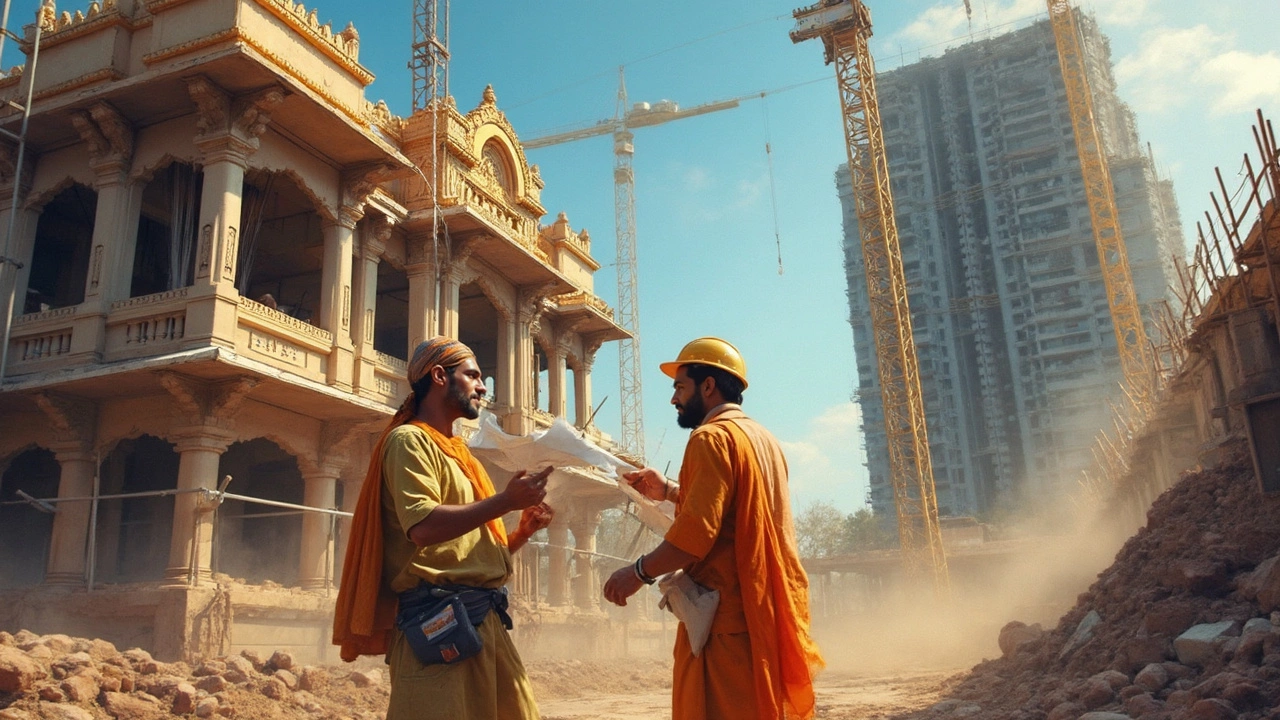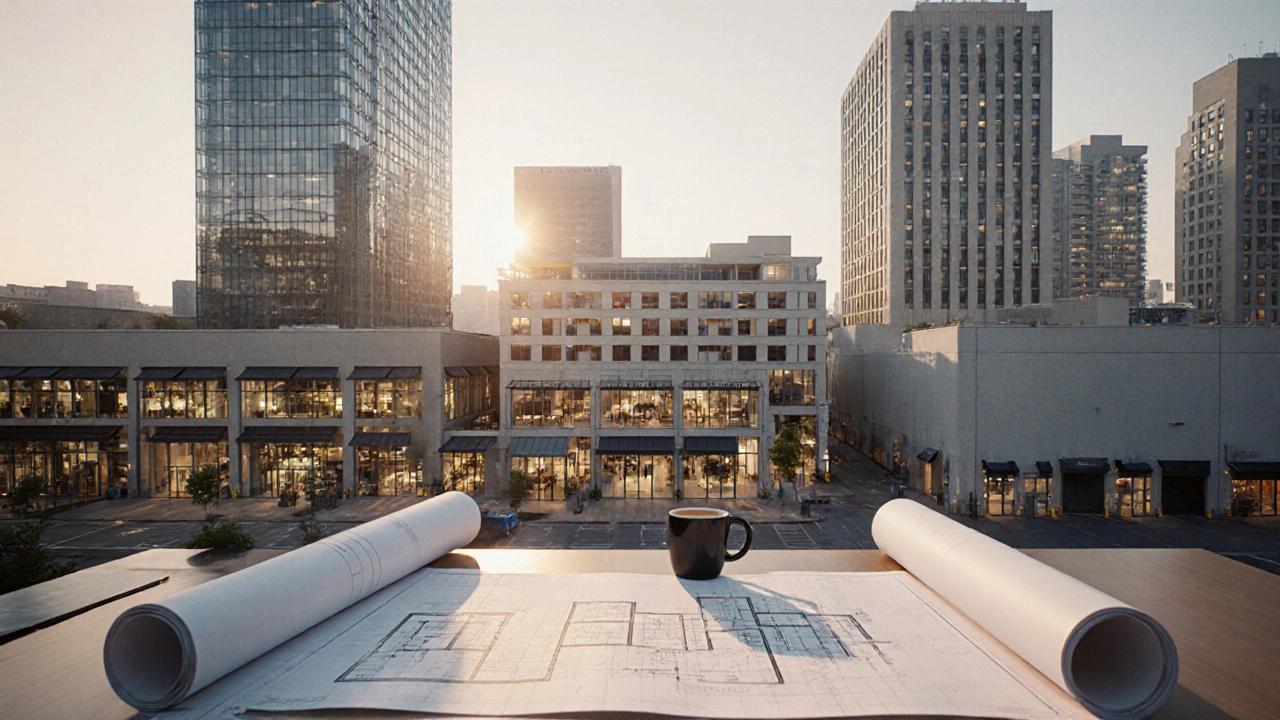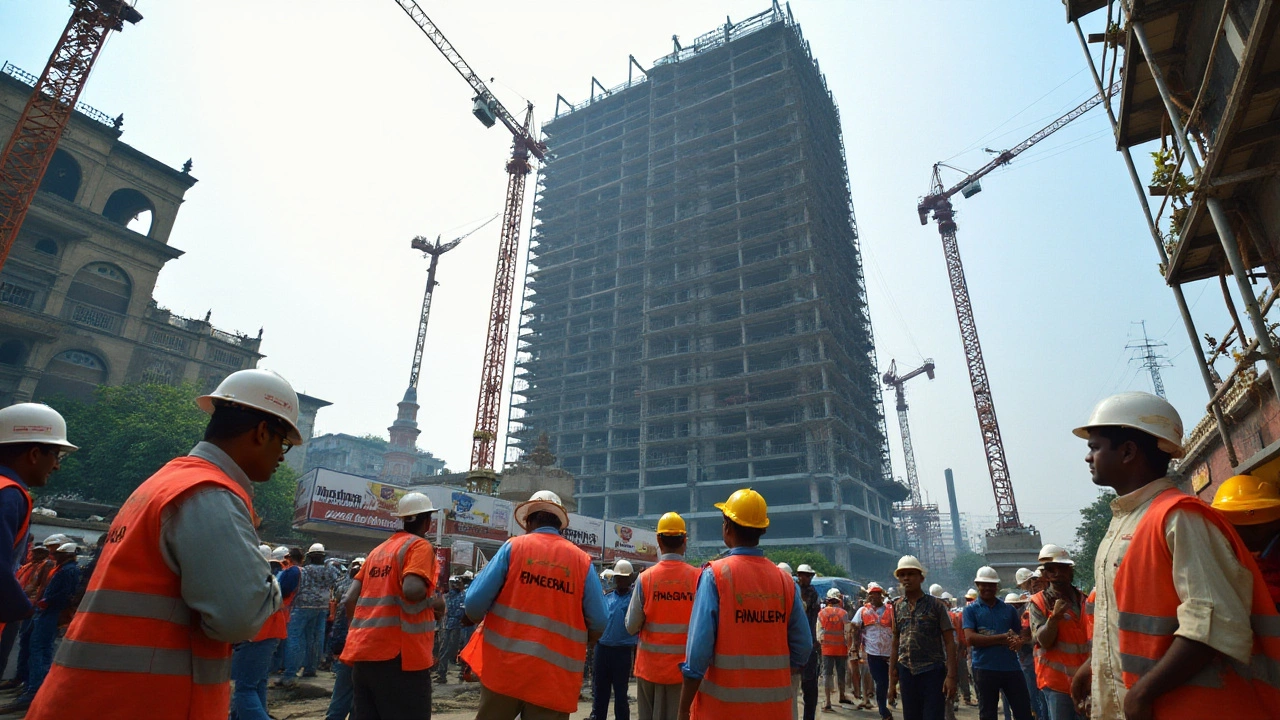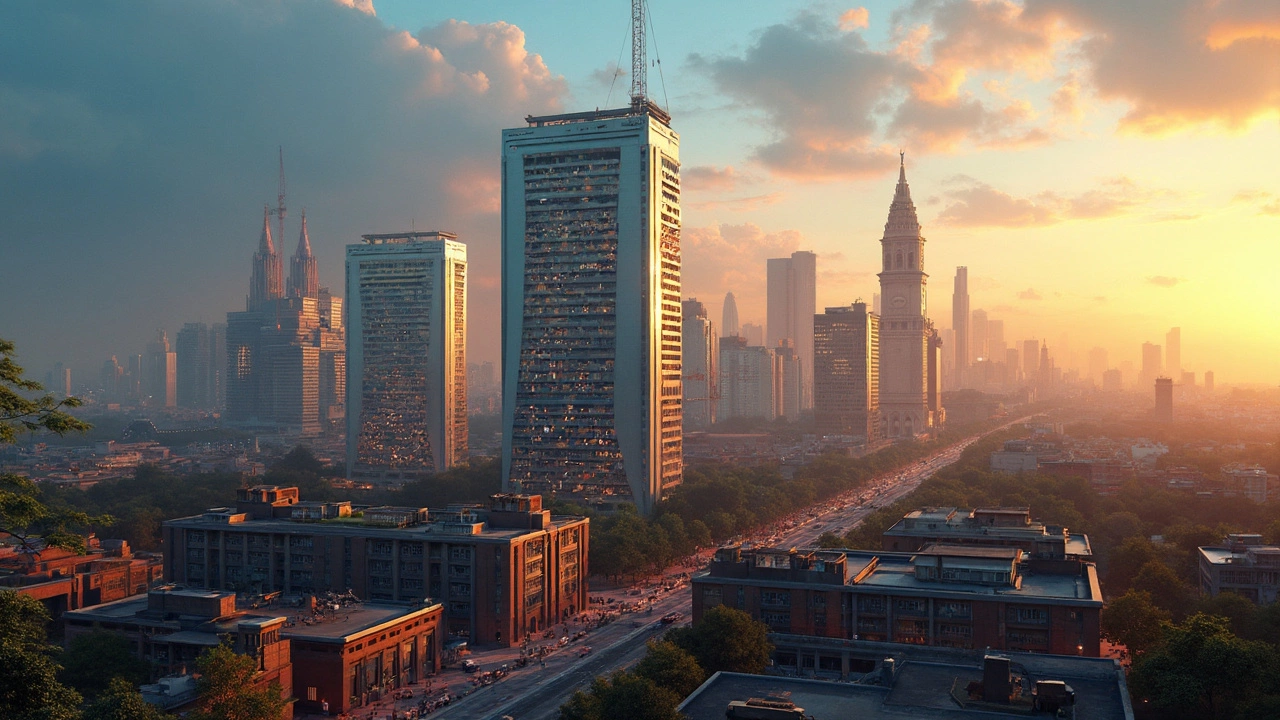Commercial vs. Residential Construction: Making the Right Choice

Ever find yourself stuck between choosing commercial or residential construction for your next project? It's not uncommon. Both types have their pros and cons depending on what you're aiming for. Think of it as picking between a sophisticated office space or a cozy family home. Each has its unique requirements and outcomes, demanding different approaches in design, planning, and execution.
First off, understanding that commercial construction often deals with larger projects like offices, malls, or warehouses is crucial. These structures typically require more extensive planning due to tighter regulations and higher safety standards. On the other hand, residential construction revolves around building homes or apartments, focusing more on personal living spaces and comfort.
When it comes to regulations and permits, expect a more complex process for commercial projects. They often involve more in-depth inspections focusing on safety codes, accessibility, and environmental impact. Residential projects have their fair share of rules, but they're generally more straightforward, dealing mostly with local zoning laws and building safety standards.
- Understanding Commercial and Residential Construction
- Key Differences in Regulations and Permits
- Cost Considerations and Budget Planning
- Impact of Location and Market Demand
- Long-Term Investment and Profit Potential
Understanding Commercial and Residential Construction
Diving into the world of construction can be a bit like stepping onto a bustling construction site—there's a lot happening, and it's crucial to know where to stand. So, what's the deal with commercial construction versus residential construction? Let's break it down.
Commercial and residential projects differ fundamentally in purpose and scope. At their core, commercial constructions are geared toward business use. They could be anything from office buildings, shopping complexes, to warehouses. These projects often require large teams due to their scale and complexity.
On the flip side, residential construction centers on living spaces—houses, apartments, condos. This sector deals with creating personal living environments and usually involves smaller teams and swifter timelines compared to commercial builds.
The Scale of Projects
Generally, commercial projects are colossal in comparison. Imagine constructing a skyscraper versus a single-family home. The sheer scale impacts everything from materials used to labor requirements. More steel, more concrete, more everything!
Diverse Designs and Materials
Commercial buildings often showcase a sleek, utilitarian design focused on functionality and durability. Materials like steel frames and reinforced concrete are staples. Residential buildings, however, may lean towards aesthetics and comfort, using materials such as wood, bricks, and tiles more liberally.
Specialized Equipment
The gear needed varies too. Commercial sites might attract cranes, cement mixers, and heavy machinery for moving earth and erecting towering structures. Residential sites? Expect more hand tools and smaller equipment—think saws, nail guns, and brick cutters.
Workforce Dynamics
The workforce employed on commercial projects bring in specialists from diverse fields—architects, engineers, project managers, you name it. Residential construction crews often feature a mix of versatile workers who handle multiple roles, adjusting to the various tasks these projects present.
Choosing between these sectors often depends on your goals and resources. Looking to make a significant urban impact? Commercial might be your path. Wanting to create inviting homes? Residential could be your calling. Each has its place, and understanding the differences is key to making the right decision.
Key Differences in Regulations and Permits
Navigating through commercial construction and residential construction can feel like stepping into two different worlds, especially when it comes to regulations and permits. These rules can make or break your timeline, so let’s dive into what makes them different.
In commercial construction, expect a more rigorous permitting process. Why? Because commercial projects generally affect more people and have to meet stricter safety and health standards. Think about it: fire safety, accessibility for disabilities, and environmental impact are just some of the areas under scrutiny. For instance, fire exits in a commercial building must adhere to specific international codes, whereas residential exits might have more leniency.
“Commercial projects need to meet a higher bar, often due to the public nature of these spaces,” - Jane Arkwright, Director of Construction Standards Council.
Residential vs. Commercial Permits
Now, residential permits are a bit kinder on your stress levels. They're designed to ensure safety and aesthetic harmony with the neighborhood. Local building codes matter most here, primarily zoning laws and safety standards that cater to individual dwellings. Easier, but still crucial!
Differences in Zoning Laws
Zoning laws can trip you up if you’re not careful. Commercial zones often have a checklist that includes parking space allocations, noise levels, and signage. Residential zoning is simpler but varies more by local guidelines. Remember, a family home doesn’t need a parking lot, but a new mall does!
Inspections and Compliance
Inspections are rampant in commercial construction. Expect multiple visits and assessments throughout the project. Does that sound exhausting? It’s meant to ensure compliance with all the regulatory specifics. Residential sites do get inspected, but typically less frequently and with simpler criteria.
Understanding these regulatory and permitting differences can save you time, money, and a few headaches down the road, no matter if you're building your dream home or the next big shopping center.

Cost Considerations and Budget Planning
Let's break down the dollars and pounds of commercial construction and residential construction. The numbers here often make or break a project. Generally speaking, commercial projects come with bigger budgets because they involve larger structures and more sophisticated systems; think HVAC and extensive wiring.
Initial Budgeting
Starting with budgets, commercial constructions are usually more complex, needing detailed plans and cost breakdowns from the get-go. It's not just about the building cost but also the interior design, furnishings, and compliance costs. Long gone are the days of vague estimations; everything is scoped to the cent or penny. Conversely, residential projects can be a bit more flexible. The scope is generally smaller, and costs can be adjusted as per personal preference.
Hidden Costs
Beware! Many forget about hidden costs like site preparation, especially in commercial settings. This could involve clearing previous structures or landscaping, which can add a fair bit to the final bill. Residential projects aren't completely off the hook either. Things like custom finishes or unexpected labor fees can sneak in.
Financing Options
Commercial constructions usually have more options for financing, thanks to their scale and potential for high returns. You might see developers securing commercial loans with lower interest rates. Residential projects depend more often on personal savings or traditional home loans, which can limit how much you can borrow and spend.
Maintenance and Operational Costs
A factor often overlooked is the long-term maintenance of either type of project. Commercial buildings might require periodic upgrades to stay competitive and compliant, and these can be pricey. Residential properties are less demanding in this aspect, often needing less frequent and less costly upgrades.
Here's a rough comparison table just to throw some numbers in:
| Aspect | Commercial Construction | Residential Construction |
|---|---|---|
| Average Cost per Square Foot | £150 - £300 | £100 - £200 |
| Typical Timeline | 6-24 months | 3-12 months |
| Financing Complexity | High | Medium |
Balancing these costs against your town or city's market demand is crucial. Sometimes a higher initial investment in commercial property can be justified by quicker returns or higher rental yield.
Impact of Location and Market Demand
When it comes to commercial construction, location can make or break your project. Choosing the right spot is crucial because it directly affects foot traffic, customer reach, and ultimately, revenue. Think about it: a retail store in a bustling city center is likely to get more visitors than one tucked away in a quiet, less accessible area.
For residential construction, the neighborhood's vibe and amenities play a huge role. Families might prefer areas with good schools, parks, and a low crime rate. The right location can add significant value to the property, which is something every homeowner or investor should consider.
Let's not forget market demand. In commercial projects, it's all about understanding what businesses need in a certain area. Is there a demand for coworking spaces in your city? Are people complaining about the lack of good cafes? Conducting market research can provide insights that guide your construction decisions.
Considerations for a Prime Spot
- Transport Links: Easy access to public transport boosts both residential and commercial property value.
- Local Economy: Check local economic data. An area with booming businesses is usually a good sign for commercial construction.
- Future development: City plans for new roads or infrastructure can increase an area's attractiveness.
Moreover, it's essential to look at trends. Some urban areas are seeing a shift toward residential spaces due to increased remote work, impacting demand. Conversely, certain regions might see a spike in the need for commercial construction like logistics centers, thanks to the e-commerce boom.
In terms of stats, according to a recent report by the RICS, urban areas in the UK have seen a 15% increase in housing demand over the past two years, pushing many developers to tilt toward residential units. Such trends are important focal points for builders aiming to capitalize on current market dynamics.

Long-Term Investment and Profit Potential
When it comes to long-term investment and profit potential, the game is quite different for commercial construction compared to residential construction. Both have unique ways of yielding returns, but understanding their dynamics can significantly affect your decision.
Commercial Construction: Big Risks, Bigger Returns
Commercial construction often means dealing with larger sums and potentially higher returns. Think of big office buildings, shopping centers, or warehouses. If the market demand in a particular area spikes, those investing in commercial properties can see substantial profits. However, with high potential rewards come high risks. The market can be volatile, and the vacancy rates can affect profitability more significantly than in residential properties.
Moreover, commercial leases often last longer than residential ones, providing a more stable income stream when tenants are secured. For instance, it's not uncommon for commercial leases to run for five or ten years compared to one-year leases in residential areas.
Residential Construction: Stability and Scaled Growth
On the flip side, residential construction tends to be more stable. Homes and apartments are always in demand, no matter the economic climate. This demand makes residential properties a safer bet for consistent returns, albeit often lower than the peaks commercial properties can offer.
Investment in residential properties can also benefit from appreciation over time, especially in thriving neighborhoods. Limited land supply combined with growing populations ensures there will always be someone seeking a place to live. While the profits might be smaller on a per-unit basis compared to gigantic commercial spaces, they’re typically more predictable.
Market Trends and Economic Cycles
Both markets are influenced by economic cycles, but they don't ride those waves the same way. Commercial properties are more vulnerable to economic downturns when businesses may downsize or shut down. Residential properties often weather these storms better, as people still need housing regardless of economic conditions.
To make informed decisions, investors often examine historical performance data and trends. They dive into demographics and economic forecasts to pinpoint the next potentially profitable areas. Those willing to keep a close tab on market trends stand to gain the most over time.


